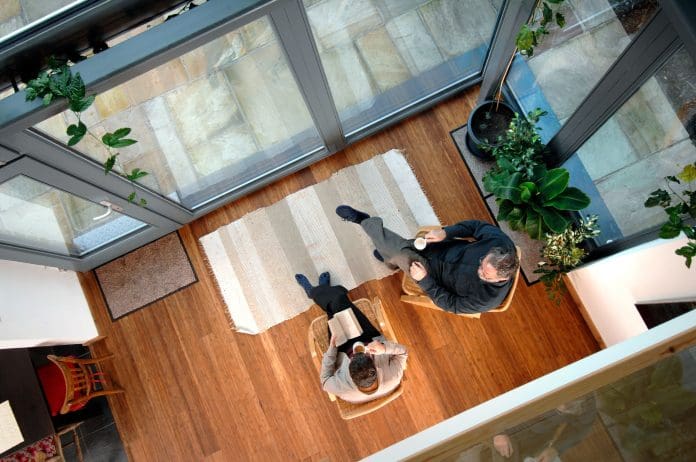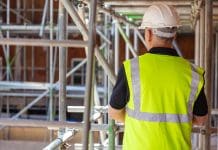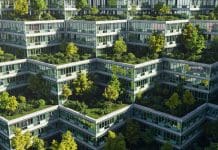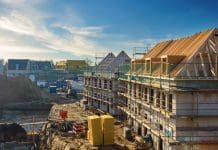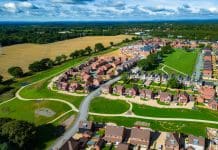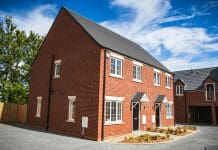Energy efficiency and security, alongside health and comfort, will dominate conversations around high-performance homes in the coming year, writes Andy Mitchell, managing director at 21 Degrees
As we enter 2025, the planning and building sector faces a transformative year. Global uncertainties, shifting homeowner priorities and regulatory changes are reshaping how we think about our homes.
High-performance housing – once the domain of niche projects – is now essential for addressing the pressing challenges of energy security, sustainability and wellbeing.
Homes should offer more than just shelter; they should provide health, comfort and security for those who live in them. This ethos is driving a seismic shift in how residential
properties are designed, built and lived in.
Energy security in a turbulent world
The past few years have reminded us of the fragility of global energy systems. The ongoing war in Ukraine, unrest in the Middle East and the escalating impacts of climate change have stressed the need for energy independence. These events have reverberated through energy markets, creating price volatility and exposing the risks of over-reliance on fossil fuels.
In response, homeowners and self-builders are seeking solutions that reduce their dependency on traditional energy sources. High-performance homes, designed to minimise power demand, are at the forefront of this movement. Advanced insulation, airtightness and technologies like heat pumps, solar panels and battery storage are not just environmentally beneficial – they are essential for achieving energy security.
Homeowners are no longer asking, “can I afford to make my home energy-efficient?” Instead, they’re asking, “can I afford not to?” These technologies ensure stable, predictable energy costs while creating homes that are more resilient to external risk factors.
Homes as places to live, not just investments
Another change we’re witnessing is how people view their homes. For decades, homes have been treated primarily as financial assets – investments to be flipped or upgraded with resale value in mind. But this mindset is evolving.
Today, more families are treating their homes as places to live, raise children and thrive. They are prioritising health and comfort over the previous misconception that they are a financial return on investment. This shift is reshaping how people approach home improvement and self-build projects.
Instead of focusing solely on “payback periods”, homeowners are asking how their homes can enhance their quality of life. They’re investing in features that promote wellbeing, such as mechanical ventilation with heat recovery (MVHR) systems that ensure clean, fresh air
throughout the year. Insulation and airtightness create thermal comfort, while renewable energy systems offer long-term cost savings and energy security.
These decisions reflect a growing awareness that the true value of a home lies in how it serves its occupants. A well-designed, energy-efficient home provides tangible benefits every day – whether it’s lower energy bills, healthier indoor environments, or greater peace of mind during turbulent times.
The missed opportunity in government policy
With 2025 marking the first year that gas boilers will no longer be permitted in new builds, the industry expected bold action from the government to incentivise renewable energy adoption. Unfortunately, the Autumn Budget fell short of delivering the sweeping measures many had hoped for.
While initiatives like the Boiler Replacement Scheme exist, they’re often limited in scope and complexity, leaving many homeowners without the support they need to make meaningful upgrades. This is a missed opportunity.
To accelerate the transition to low-energy, high-performance homes, we need expansive, accessible initiatives that empower homeowners and builders alike.
Despite these challenges, the industry remains optimistic. Policymakers may yet respond to mounting pressure for more robust incentivisation. Until then, it’s up to architects and builders to lead the way.
2025 and beyond: Setting new standards for sustainability
Looking ahead, it will be a pivotal year for the building sector. High-performance homes are no longer a luxury – they are a necessity. The combination of global challenges, evolving homeowner priorities and regulatory changes will continue to drive innovation in how we design and build homes.
It’s worth viewing this as a moment of opportunity. By prioritising energy efficiency, comfort and resilience, we can redefine what it means to live well in the 21st century. Whether planning a self-build, renovating an older property or designing the next generation of homes, the time to act is now.
The homes we build today will shape the way we live for decades to come. Let’s ensure they are homes that provide not only shelter but also security, sustainability and a better quality of life for all.


